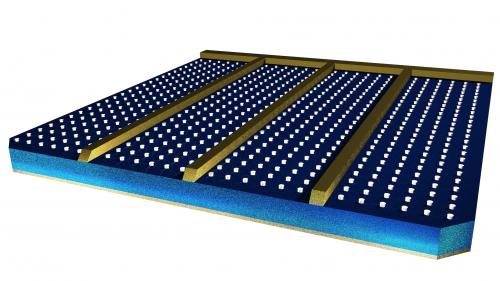This article is more than 1 year old
Brit boffins trap light in Lego-like lumps
Aluminium studs make solar panels more efficient
It's long been known that texturing the surface of solar cells can help them retain light and get more efficient. Now, a group of researchers led by Imperial College, London, has found that nano-scale aluminium “studs” on a cell's surface can improve its light-gathering by as much as 22 percent.
The team, which includes scientists from Belgium, China and Japan, says the idea is to reduce the cost of panels by reducing the area of absorbing material required for a given output since the absorbing material can make up half the cost of a panel.
As Dr Nicholas Hylton, of Imperial College London's Department of Physics, explains: “As the absorbing material alone can make up half the cost of a solar panel our aim has been to reduce to a minimum the amount that is needed”.
The 100-nanometre rows of aluminium cylinders were attached to the top of the solar panel in an arrangement not unlike Lego. This structure helps reflect and trap individual rays of light in the absorbing material for longer, extracting more energy from the light.

Tiny aluminium 'studs' trap light in the solar panel
Image: Dr Nicholas Hynton, Imperial College London
Similar effects have been seen with microstructures of silver or gold, but Dr Hylton told Phys.org aluminium is both cheaper than those metals, and has a better interaction with light.
“Gold and silver both have a strong effect on passing light rays, which can penetrate into the tiny studs and be absorbed, whereas aluminium has a different interaction and merely bends and scatters light as it travels past them into the solar cells,” he said. ®
